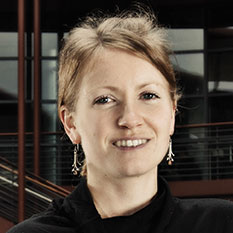Reimagining health care education
This weekend, a wide range of stakeholders will gather on campus for Medicine X | ED. We asked executive director Larry Chu, MD, to explain the ideas behind the “Everyone Included” academic conference — and why now is the right time for change.
What’s the origin story of Medicine X | ED?
At our fall conference, we kept seeing the same misconceptions, year in and year out. We realized that if we were really going to change health care, we had to start much earlier in the process, before people become providers, before people become patients. What if there were a conference in which we rethought the entire notion of health care education, one in which we operated on the “everyone included” vision, this idea that all health care stakeholders have something to contribute?
If we’re going to really advance and create the health care system we want, then we have to change the way we’re educating and teaching the people that work and live in that system.
People will be bringing a range of perspectives and priorities to Medicine X | ED. What are the high-priority changes you, personally, would like to make to health care education?
First, inter-professional, interdisciplinary, team-based collaboration is essential to the future of our functioning health care system. And we can’t get there if we’re not learning and teaching together. In health care, we learn in silos. Medical doctors train in medical school and we don’t know anything about pharmacists. Pharmacists train at pharmacy school. They tend not to know anything about nurses. Nurses train at nursing school. They don’t know anything about occupational therapists. Yet when we’re all done, we’re expected to work together. We’re expected to form a team for the benefit of the patient.
I think the other change that needs to happen is a shift toward flattening power hierarchies and elevating respect hierarchies. And that really means spending time in our curriculum to understand the misperceptions that arise between the patient persona and the provider persona, so that we can uncover the roadblocks to honest conversation that get in the way of participatory health care decisions.
We can’t have honest conversations if we don’t have trust, and we don’t have trust in our relationships because we don’t understand each other.
Understanding how to effectively use technology to engage today’s learners is another aspect of medical education that we need to accelerate quickly. We know that millennials are wired to learn differently. Yet medical educators today unfortunately make the assumption that what worked for them when they were students should work for today’s learners.
If we were able to implement some of these changes right away, how might the patient experience be different in 10 years? What kind of provider might we encounter?
The provider of the future is one who will meet you around a table on equal footing. He or she is going to be a collaborative partner — one who will ask questions, not just write orders. “How are we going to work on this together?” Not, “Why didn’t you take your blood pressure medicine?”
More importantly, the provider of the future is going to be incredibly knowledgeable about the many options that surround patient life, including the role of the pharmacist, the occupational therapist, the nursing resources — because, again, it’s about inter-professional teams. In fact, I would say that the relationship isn’t centered around the medical doctor. (Do you know who the most accessible health care professional is, today, to patients? It’s the pharmacist.)
Why is right now the moment to make big changes to health care education?
That’s interesting. I guess part of it was explained by Lindred Greer’s keynote address at Medicine X 2016, in which she discussed organizational leadership and hierarchy. One of the things she mentioned is that organizations that are very hierarchal reach decisions quickly, and sometimes hierarchy is a good thing. Like when you’re lying on the ground and you have no pulse and somebody has to get your heart started again quickly, you want hierarchy. Right? I think, at its essence, that’s how health care has been organized since the old, old days.
What’s changed is, No. 1, health care has become so complex. Skills are so specialized. Collaboration is not a nice-to-have, it’s a must-have. And therefore we’re moving toward team-based approaches.
As Lindred mentioned, diverse teams that have considerate leadership tend to show the most creative approach. They might not reach the fastest decisions, but they generate the most innovative decisions — and that’s been part of the problem with health care. It hasn’t been innovative.
Lastly, we’re shifting the model because there’s a whole generation of new tools — digital health, data that’s coming in and empowering the end user to take control and to be more collaborative. And we’re realizing that costs have become so out of control that the old model of paternalistic medicine, of hierarchal medicine, is unsustainable. It doesn’t work. We have to create a model of engagement where people want to participate, and want to engage, so that there’s buy-in and personal responsibility.
Medicine X | ED takes place on campus this Saturday and Sunday, April 22-23. Follow @StanfordMedX or the hashtag #MedX for live coverage on Twitter, or watch online here.
-
[…] great interview with one of Stanford Medicine X’s team, Dr Larry Chu, has also been posted here. You can learn about his thoughts on the future of medical education, and how important it is for […]
Leave a Comment







I strongly agree with Mr. Chiu’s statement about learning and teaching together. More often than not, there are internal groups that are “silo-ed”. Although this may not be intentional, rather people may just believe that it’s irrelevant to share certain information with others, it’s preventing and cutting off open communication that could be the start of a great idea.
Cross-learning and open communication should be a widespread initiative across all industries and between various positions, including health care.
I am a mid-level administrator in a federally qualified health center (FQHC), and my vantage point allows me to observe the interactions of different types of providers. Since we operate in an integrated care environment, providers actually collaborate with each other. Many of the CHCs across the country employ this model very effectively – costs are lower and patients are happier. Maybe other health organizations could learn a thing or two…
I love the idea of learning and teaching together!
One of the most important and valued things that can happen when a parent has a sick child is for that child to be able to come home as soon as possible. Connecticut home health care agencies assist families when pediatric nursing services are needed to help their seriously ill children.